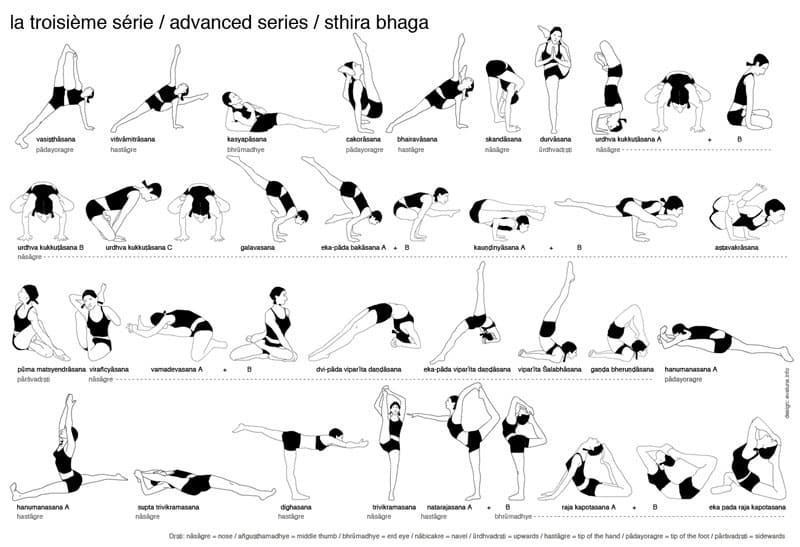I am a huge fan of the Ashtanga practice. The intensity, the discipline, the mindlessness, and the routine of the sequential practice makes it like a second home for me. I always know that there are mornings where I can wake up and work without thinking, push myself without thinking of how, breathing without having to plan for a destination. But there are some problems with practicing the Ashtanga practice exclusively.
The Ashtanga series were a prescription for Krishnamacharya’s Indian students, namely his most famous student Pattabhi Jois. Krishnamacharya made them specifically for 15-year-old Indian men that were training for hours each day and that didn’t have previous injuries, or probably a lot of other sports and exercise experience.
This means that Krishnamacharya had a specific purpose in creating this sequences for young and fit Indian men and that the sequence is optimized for the Indian skeleton and definitely not for the other types of human skeletons. This becomes especially apparent when westerners begin trying lotus pose, Kukkutasana, and the Marichyasanas.
So there comes a point when one starts to realize that certain poses simply aren’t good for their body. This is half-bound lotus pose for me. The reason is that my knees are simply not strong enough to stretch my hips as deeply as the stretch requires, even though my hips are very open and I have good alignment. At a certain point, we have to realize that the body is mechanical; it has very real limitations that you will sooner or later be coming into increased contact with.
In my first two weeks, I was injured in the Ashtanga sequence. Marichyasana B, I can remember the stress of feeling injured like it was yesterday, my lateral collateral ligament snapped and I heard a very audible pop while I was in the full pose with the bind. I quickly got out of the pose and finished my sequence, then went home to look up some rehab exercises for my knee. It took a couple of days of exercises and taking it easy to let my knee heal. Not a fun few days while I was healing.
I continued my full practice for the rest of the time in India, making adjustments and skipping poses when it felt right. I did some extra work to make sure my knee was stable and working properly and avoided walking too much to make sure that the joint was getting less stress. Slowly full lotus opened up for me while I was rehabilitating my knee, though there is still quite a bit of space left to create in my hips. The injury forced me to be more conscious of what I was doing, to not accept things as they were explained, in black and white.
What is the point of that story? Every body is unique, so how can one series work for everyone’s skeleton? It can’t.
I think that there are parts of the Ashtanga sequence that are almost perfect in their ideal succession, mainly the standing series of the primary series. There is something especially cleansing about doing the poses in that order, and the inversions at the end are simply magical.
Sunday, I taught my first class back in the states. It was great, it was easy to forget how much I love teaching yoga until I was in the room again with all the wheels turning. It was a hybrid style so we warmed up slowly, with a bit of flow including some low lunges complete with back-bends, and even an extended child’s pose. Then we moved into standing postures and the full Sun Salutation B sequence, holding warrior 1 for less and less time and getting into the full back-bend in upward dog. Then we moved into the entirety of the Ashtanga practice. Instead of doing floor stretches, we did a bunch of ab work and then moved into some final yin-type stretches. I loved teaching the sequence and it felt right for the class; music was slow and complimentary more than anything else.
So if you come to my classes, except a little flair of Ashtanga. It’s evolving into something pretty cool and I think that someday soon I might help to develop a new series based on the Primary Series. It’s all an evolution 🙂

